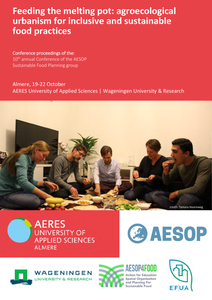Urban Consolidation Centres (UCCs) are often put forward as a solution to reduce the negative impact of freight transport on cities. However, few UCCs have so far successfully attracted sufficient volume to become viable. Receivers of goods can potentially be effective initiators of a UCC, due to their buying power. The purpose of this research is to learn how receiver-led consolidation initiatives develop. We use qualitative data on four receiver-led UCCs in The Netherlands to understand the success factors and challenges in various stages of development. Our research shows that receivers can help during the start-up stage of a UCC, when they have a large volume of goods, can convince internal stakeholders, and are willing to pay or can make suppliers pay. However, receiver-led UCCs still face challenges related to growth in the later stages and require continuous effort to attract volume.
DOCUMENT

from the article: "Abstract The way in which construction logistics is organised has considerable impact on production flow, transportation efficiency, greenhouse gas emissions and congestion, particularly in urban areas such as city centres. In cities such as London and Amsterdam municipalities have issued new legislation and stricter conditions for vehicles to be able to access cities and city centres in particular. Considerate clients, public as well private, have started developing tender policies to encourage contractors to reduce the environmental impact of construction projects. This paper reports on an ongoing research project applying and assessing developments in the field of construction logistics in the Netherlands. The cases include contractors and third party logistics providers applying consolidation centres and dedicated software solutions to increase transportation efficiency. The case show various results of JIT logistics management applied to urban construction projects leading to higher transportation efficiencies, and reduced environmental impact and increased production efficiency on site. The data collections included to-site en on-site observations, measurement and interviews. The research has shown considerable reductions of vehicles to deliver goods and to transport workers to site. In addition the research has shown increased production flow and less waste such as inventory, waiting and unnecessary motion on site."
DOCUMENT

Reinstatement of memory-related neural activity measured with high temporal precision potentially provides a useful index for real-time monitoring of the timing of activation of memory content during cognitive processing. The utility of such an index extends to any situation where one is interested in the (relative) timing of activation of different sources of information in memory, a paradigm case of which is tracking lexical activation during language processing. Essential for this approach is that memory reinstatement effects are robust, so that their absence (in the average) definitively indicates that no lexical activation is present. We used electroencephalography to test the robustness of a reported subsequent memory finding involving reinstatement of frequency-specific entrained oscillatory brain activity during subsequent recognition. Participants learned lists of words presented on a background flickering at either 6 or 15 Hz to entrain a steady-state brain response. Target words subsequently presented on a non-flickering background that were correctly identified as previously seen exhibited reinstatement effects at both entrainment frequencies. Reliability of these statistical inferences was however critically dependent on the approach used for multiple comparisons correction. We conclude that effects are not robust enough to be used as a reliable index of lexical activation during language processing.
MULTIFILE
This paper presents challenges in city logistics for circular supply chains of e-e-waste. Efficient e-waste management is one of the strategies to save materials, critical minerals, and precious metals. E-waste collection and recycling have gained attention recently due to lower collection and recycling rates. However, implementing circular urban supply chains is a significant economic transformation that can only work if coordination decisions are solved between the actors involved. On the one hand, this requires the implementation of efficient urban collection technologies, where waste collection companies collaborate with manufacturers, urban waste treatment specialists, and city logistics service providers supported by digital solutions for visibility and planning. On the other hand, it also requires implementing urban and regional ecosystems connected by innovative CO2-neutral circular city logistics systems. These systems must smoothly and sustainably manage the urban and regional flow of resources and data, often at a large scale and with interfaces between industrial processes, private, and public actors. This paper presents future research questions from a city logistics perspective based on a European project aimed at developing a blueprint for systemic solutions for the circularity of plastics from applications of rigid PU foams used as insulation material in refrigerators.
MULTIFILE

These conference proceedings to the 10th annual conference of the AESOP Sustainable Food Planning group are organised as follows: the following four sections contain the short papers belonging to the four tracks that made up the conference (social inclusion; urban agriculture; urban planning, design and development; food governance). The last section consists of the abstracts of the book and poster presentations, a short report on the YAP workshop held at the first day of the conference, and a short report on the excursion organised at the last conference day.
DOCUMENT
